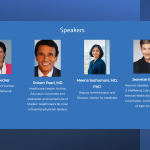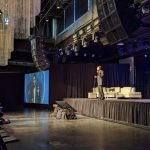The fields of construction and healthcare hardly seem similar on the surface. One leads to new bridges and airports. The other aims to keep hearts beating and bodies moving.
But beneath the surface, these two professions share many interesting and overlapping qualities.
People who choose a career in either profession take an oath to “do no harm” and put safety above all else. Each industry is highly regulated and litigious. Both are currently stranded on “data islands,” where it seems impossible at times to share information easily or transparently with others. And, perhaps most challenging of all, both professions are grounded in conservative workplace cultures, which hold tight to the unwritten rules of the past.
That last point (about workplace culture) was the focus of my latest book, “Uncaring: How the Culture of Medicine Kills Doctors & Patients.” Upon reading it, the organizers of a multi-day shareholder meeting for Thornton Tomasetti (a world-class engineering firm) reached out and invited me to present a keynote address. They felt the people in their company would benefit from learning about the challenges facing physicians and how to apply lessons from healthcare to their own workplace culture.
With so many similar frustrations and opportunities between our respective industries, I am confident doctors and engineers can learn a lot from each another.
On Tuesday, I addressed more than 200 shareholders and company executives in a large conference room at the firm’s global headquarters, a few blocks from the New York Stock Exchange. I met dozens of men and women who’ve dedicated their careers to building skyscrapers, arenas and stadiums around the world. They were passionate, principled and intensely curious about solving the worlds’ toughest challenges. To quote the company’s motto: “When others say no, we say ‘here’s how.’”
That’s not merely lip service. Thornton Tomasetti has designed five of the world’s tallest completed buildings. With over 1,500 engineers, scientists, architects and support professionals, the company’s work spans 50 countries and a broad range of industries—from construction to defense, transportation, manufacturing and energy. I was particularly impressed to learn that the company has provided the engineering expertise for several baseball parks, including Yankee Stadium, and led the recovery efforts at Ground Zero after the attacks of 9/11.
I was then surprised to learn that this massive engineering firm has a large presence in the healthcare space, as well. To date, Thornton Tomasetti has undertaken more than 1,800 projects in 20 countries, with more than 40 million square feet of hospitals and research facilities to its name.
My keynote presentation focused on five major failures in healthcare caused by the culture of medicine (lessons that translate between healthcare and construction). In medicine, we note:
- The failure to spot the biggest problems (like chronic diseases, medical errors, and wasted services) and, thus, the failure to correct them (with preventive medicine and integrated healthcare delivery)
- The failure to realize how even well-trained professionals can contribute to underperformance (fact: 30% of all healthcare dollars are wasted on redundant testing and ineffective treatments)
- The failure to embrace modern technologies that can make a tremendous difference in people’s lives (these include deep data analytics, artificial intelligence and telehealth); opportunities that are missed largely because these technologies fail to boost the status and prestige of the people using them
- The failure to select, train and motivate people for a future that will be reliant on smartphones and improved communications (doctors are instead selected based on their test-taking abilities and their capacity for memorizing thousands of arcane facts)
- The failure to reward professionals based on their outcomes (the culture of medicine instead rewards doctors who do the most interesting and complex procedures—heart and brain surgery—rather than the primary care physicians who prevent major medical problems from happening in the first place).
When industries undergo disruptive change, the people most effected (be they carmakers, computer engineers or manufacturers) often experience the five stages of grief as described by Elisabeth Kübler-Ross. The companies that survive and thrive aren’t the ones that just anticipate the future but create it. I encouraged those in the room to do so in construction in the same way that leaders in medicine are striving to transform healthcare.
During the panel discussion and Q&A that followed, two experts from the firm joined me to dive deeper into the application of modern technology in both healthcare and engineering.
We agreed that data transparency and consistent leadership can promote innovation and overcome resistance. Further, artificial intelligence can safely and effectively analyze massive amounts of data—generated from wearable devices in medicine or drones examining massive steel beams in construction—all for a fraction of today’s costs.
In the end, we agreed that being the best today isn’t enough. Our industries must focus on attracting the best young minds and inspiring the next generation to dedicate their skills to improving the lives and health of people and communities.
Photo credit: Bess Adler/Thornton Tomasetti
* * *
Dr. Robert Pearl is the former CEO of The Permanente Medical Group, the nation’s largest physician group. He’s a Forbes contributor, bestselling author, Stanford University professor, and host of two healthcare podcasts. Pearl’s newest book, “Uncaring: How the Culture of Medicine Kills Doctors & Patients,” is available now. All profits from the book go to Doctors Without Borders.






